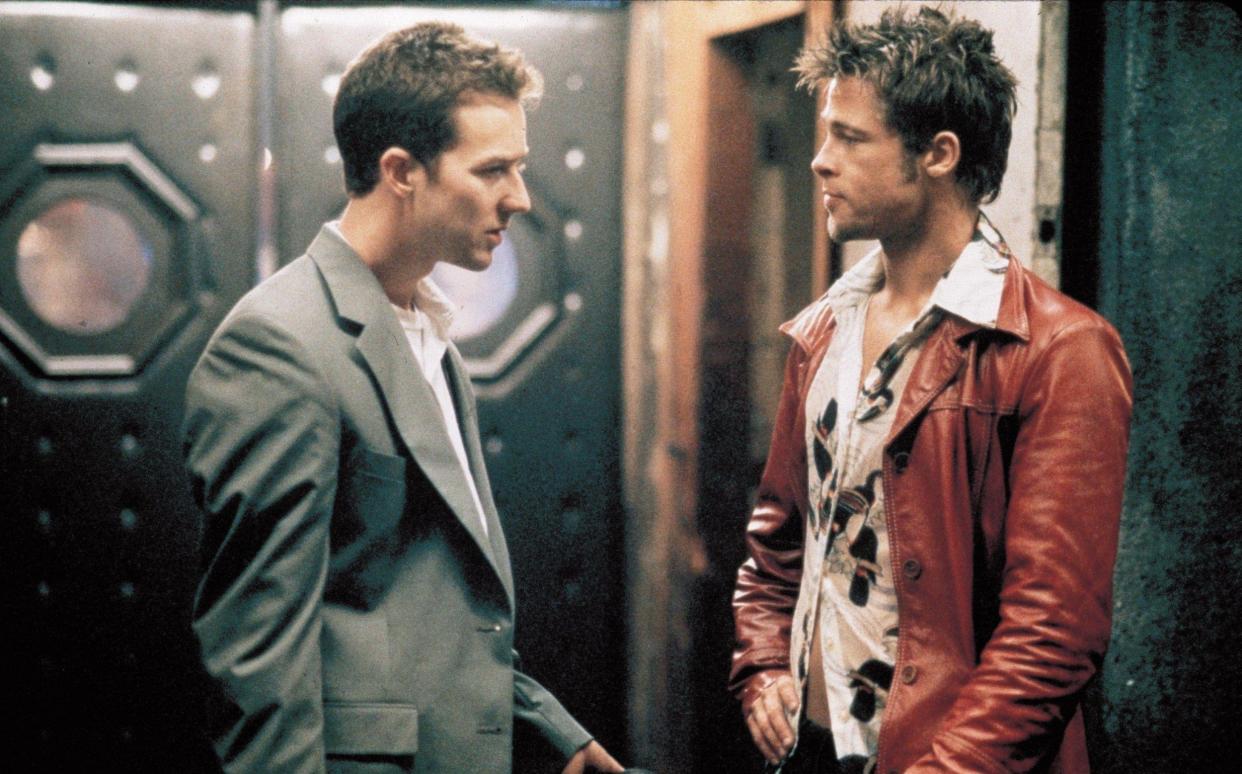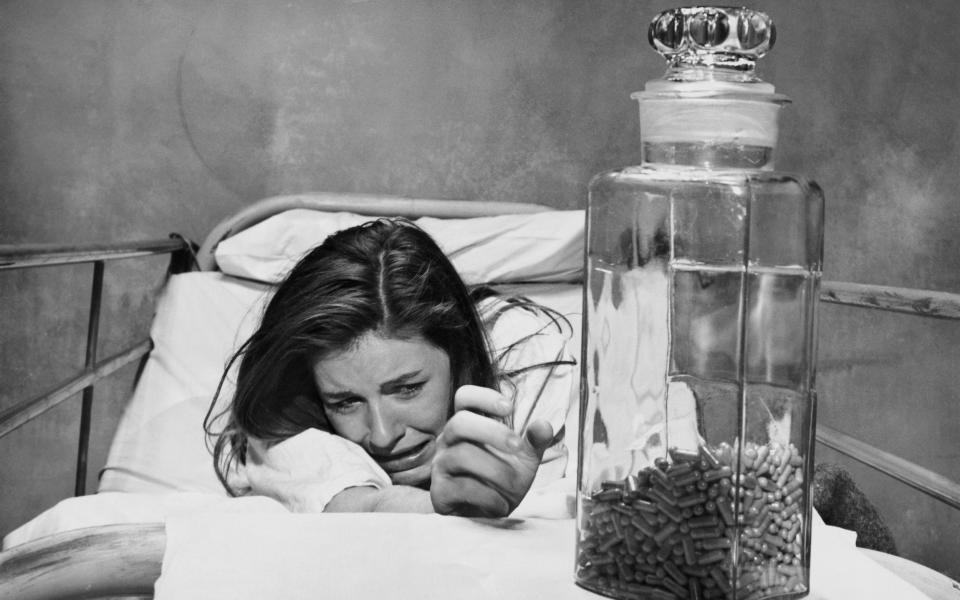Fight Club’s Chuck Palahniuk on the secret to writing a great novel

Nothing good emerges from nothing. Years back, Max Brooks and I were alone in an otherwise empty lecture hall. His book World War Z (2006) had become the all-time bestselling zombie novel, but I suspected it wasn’t about the walking dead. OK, it was and it wasn’t.
Talking about his childhood, and his father, Mel Brooks, Max said, “We never ate in restaurants because, all through dinner, men would line up at our table to tell my dad their best jokes. Every Jewish dentist dreamt of making his hero, Mel Brooks, laugh.” And laugh he did, whether or not the joke was funny, while his wife, Anne Bancroft, graciously played along with the performance. Relaxing it was not.
Here, I saw my opening. “Your mother?” I asked, “Is World War Z really about your mother?” This wasn’t a random guess. The last year of his mother’s life coincided with the year in which Max had been writing the book. His eyes got, well, misty, and he said, “No one’s ever caught that.”
He went on to say that in her final year, he’d driven his mother to oncologist after oncologist. Each had confidently assured them about a new cancer treatment and set their minds at ease. That’s why each government in the novel confidently announces a new plan for resolving the zombie problem.
Each promising cancer therapy had failed, and that’s why, after a year, the zombies win. Max said readers hated the downer ending of the book, but that’s how it needed to end, because, after a year of battling cancer, Anne Bancroft had died.
Max and I alone in that lecture hall, well, it was a moment. A nice moment.
Max is funny and hairy and has flat feet – a defect that got him bumped out of military training. All his life, older men had told him, “Your mother, in The Graduate, she’s sex personified! The sexiest woman alive!” So he’d never watched the movie. His fear was he’d get an erection, and then what?
The truth was, Anne Bancroft had always grown her own vegetables and saved the seeds to replant year after year. She canned food. During the Rodney King riots, she’d watched the smoke rising over Los Angeles and calculated how long her family could eat if she butchered their pet pit bull and harvested the koi in their backyard pond. Max told me, “She was basically an Italian peasant,” but not with rancour. With pride. He’d compiled everything she’d taught him. About gardening, about canning. He’d put all of this into his first book, The Zombie Survival Guide (2003).

I wasn’t surprised. This is what it takes to write a good book. My best writing teacher, Tom Spanbauer, taught me as much. Tom called it “Dangerous Writing”, and by that he meant that a writer had to explore an unresolved personal issue that couldn’t be resolved. A death, for instance. Something that seemed personally dangerous to delve into. By doing so, the writer could exaggerate and vent and eventually exhaust the pain or fear around the issue, and that gradual relief would keep the writer coming back to work on the project, despite no promise of a book contract or money or a readership.
Moreover, the writer had to explore the issue through a metaphor. Like zombies. Or fight clubs.
Everyone has a mother. Everyone’s mother will die. Few people want to read about your own mother’s death, even if she’s a movie star. A metaphor allows other people into your story. Better yet, it charms you into going deeper into the pain than you’d otherwise go. You forget what you’re actually writing about, but you don’t.
Plus, with a metaphor, you’re not approaching the pain head-on. According to Michel Foucault, going in direct opposition to an issue does not necessarily effect change. It can make the pain worse. But to come in at an angle, with humour or a metaphor, that works. Case in point, during the “Don’t ask, don’t tell” protests over gays in the United States military, political pundit Andrew Sullivan wrote of one group of demonstrators who wore elaborate hats and carried picket signs that read Gays in the Millinery. Sullivan wrote, “Foucault would’ve loved that.”
As for me, people are always inviting me for coffee or lunch. Their treat. I can always see what’s coming. “I have this great idea for a book,” they say. “I’ve got it all worked out in my head,” they say. “You should write it, and we’ll split the profits.”
Like Mel Brooks, I sit there and smile.
These people have no idea how unpleasant the act of writing can be. To go back to Tom Spanbauer, Tom calls writing a first draft “S---- ing out the lump of coal.” Meaning it’s slow and painful. Even using the best metaphor in the world, Dangerous Writing requires long chunks of isolation. The isolation is the least of it. But at least when the draft is done, you feel relief. It’s your s---. Proof the pain is gone.
On the other hand, someone else’s excrement just smells bad. Sitting at these lunches, I’m always thinking, why would I want to take your bowel movement? That’s why so-called Great Ideas seldom get written. There’s nothing personal, nothing dangerous at stake. And if they do get written, the result is lacklustre. Formulaic. Just like the sort of outline and pitch that can get bandied about over coffee and sandwiches.
For years, I corresponded with the writer Ira Levin. I continue to champion his work. The man was the 20th century’s master at nailing the unspoken with a metaphor. His novel The Stepford Wives (1972) first recognised the backlash against feminism. I’d always asked him if his novel Rosemary’s Baby (1967) triggered so much horror because it was a metaphor for the tragedy of thalidomide. Early on in the book, a well-meaning character knits booties and mittens for the unborn baby, but knits them for hands and feet like claws and pincers, one of the physical defects of the drug. Rosemary Woodhouse, the title character, is bullied into consuming mysterious cakes and drinks. The result is a child so shocking that it can’t even be shown in the eventual 1968 Roman Polanski film.
Likewise, I’ve always held that Shirley Jackson’s 1948 short story The Lottery stood for the military draft. It was written a few years after young men had been chosen at random to die brutal deaths in the Second World War. Just as the woman in the story is stoned to death, these young men would be blasted to bits. The public outrage that greeted the story upon publication in The New Yorker suggests the collective guilt and denial Jackson had triggered.
Levin would never confirm or deny my theory. Jackson, I never knew. But after the novel Interview with the Vampire (1976) had become a huge success, its author, Anne Rice, described writing it while her daughter was being treated for juvenile leukaemia. At the time, their lives were all about blood: blood draws, blood tests, blood counts. A vampire was the metaphor that emerged, and since Rice’s daughter died at the age of five, the small girl in the novel also had to die.
You see – nothing good comes from nothing.

Tom Spanbauer was right. It’s the unresolvable pain that brings you back to the task of writing. And it’s not important that anyone ever recognise your secret pain. Ira Levin probably knew that he’d be crucified if caught casting devil worshippers in a novel about thalidomide. And Shirley Jackson certainly did not want to attack the issue of compulsory military service head-on. They were writers and, as Foucault suggested, their work should be indirect, masked, yet still have its effect.
If you’ll suffer another example, let’s look at Valley of the Dolls (1966) by Jacqueline Susann. In perhaps the pulpiest of all 20th-century novels, Susann gives us a nightclub crooner, Tony Polar, who gradually falls from stardom due to a debilitating brain condition that leaves him vegetative in a mental hospital. At the same time, another star, Neely O’Hara, lands herself in the same hospital with an addiction to drink and barbiturates. In a moment fraught with melodrama, O’Hara starts to sing in a weak voice to a roomful of damaged patients. Unseen, the catatonic Tony Polar begins to stir in his wheelchair. He stands. He staggers across the room to embrace O’Hara. They sing their duet for only a moment before he collapses and is taken away. O’Hara weeps. Audiences for the 1967 film adaptation roared with laughter.
Somehow, the author didn’t find the moment quite so funny. When the film premiered at the Venice Film Festival, it was shown aboard a luxury ocean liner. As the curtain fell, Susann stormed off the ship in tears of rage. What no one knew was that she had a son, a severely developmentally disabled son. He’d been consigned to a hospital where she’d go to visit him. What came across as maudlin in the film, comic even, was most likely the weekly reunion of Susann and her son. So even schmaltz comes from something real and painful and unresolved. Even schmaltz comes from Dangerous Writing.
If you haven’t noticed by now, I’ve not revealed any of the real dangerous personal issues in my own writing. I’m not going to. Ira never did, nor did Jackson, nor did Susann, and that puts me in very good company.
What I will tell you is that when Max Brooks went off to college, during his first film course his freshman year, his professor dimmed the lights and announced that they’d be watching The Graduate. And to his great and glorious relief, he told me, he did not get an erection.
Not Forever, But For Now by Chuck Palahniuk (£18.99, Simon & Schuster) is out now


